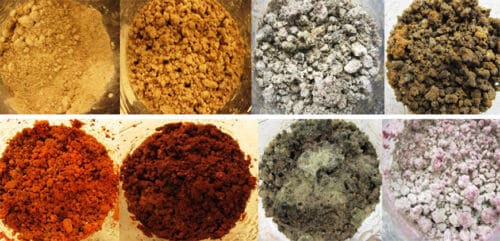Healthy soil is rich in organic matter, but scientists have yet to fully understand exactly how that organic matter is formed. Colorado State University soil scientist Cynthia Kallenbach has contributed new insight, offering evidence for microbial pathways being the chief originator of the organic matter found in stable soil carbon pools.
Kallenbach, a postdoctoral researcher in the Natural Resources Ecology Laboratory, co-authored a recent Nature Communications paper on the topic with Professors Stuart Grandy and Serita Frey of the University of New Hampshire, where Kallenbach completed her Ph.D. She is working now with Matthew Wallenstein, assistant professor in ecosystem science and sustainability in the Warner College of Natural Resources.
Microbes, not plants
In the study, which was conducted at University of New Hampshire, Kallenbach et al. suggest that soil organic matter accumulates from inputs of dead microbial cells and microbial byproducts formed when microbes eat plant roots and residues, rather than from plants themselves, as previously thought.
In the past, scientists thought the best way to build soil organic matter was to slow down or inhibit decomposition using plants that soil microbes find difficult to decompose. The idea was that the undecomposed plant parts would gradually become soil organic matter, especially if the soil microbial community was inactive.
However, this pool of soil organic matter composed of decomposing plant parts doesn’t last long and can quickly disappear as carbon dioxide, sometimes within a year. This left the question: how do we form pools of soil organic matter that persist for decades, matter that is so critical for sustaining healthy, productive soils?
Soil organic matter is a massive reservoir of carbon – containing more than twice as much carbon as there is atmospheric carbon dioxide. Thus, even relatively small changes in soil organic matter can have a large impact on atmospheric carbon dioxide, a critical greenhouse gas. Soil organic matter is also fundamental for plant growth, healthy agricultural systems, and mitigating climate change.
“Soil carbon, in my mind, is the fulcrum around which all aspects of soil revolve,” Kallenbach said.
A new pathway
Kallenbach’s research paints a completely different pathway to building soil organic matter. This pathway has been challenging for scientists to demonstrate, because once soil organic matter is formed, identifying whether it was most recently a plant or microbial cell is impossible.
In the lab, the scientists demonstrated the accumulation of significant amounts of chemically complex, persistent soil organic matter from microbial materials in the absence of any plant inputs. Microbes unexpectedly produced soil organic matter that was almost identical to natural, field-derived soil organic matter when fed nothing but table sugar. Further, soil organic matter accumulation is greatest when more–not less–active microbial biomass is formed. This is especially true when that biomass is produced more efficiently, meaning more of the substrate is converted to biomass rather than carbon dioxide.
“Cynthia showed that the amount of organic matter formed depends heavily on the characteristics and physiology of the microbial community,” Grandy said. “Challenging another long-held view, Cynthia also found that the characteristics of the microbial community are even more important for soil organic matter formation than soil type.”
The new research provides promise for designing agricultural systems that promote microbial communities that optimize soil organic matter formation.


